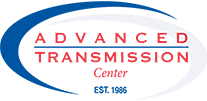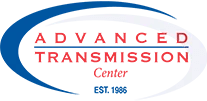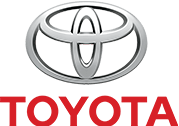
In today’s digital age, it’s not uncommon to hear someone say conversation has become a lost art, just like cursive and cross stitch. What we think they should be talking about, is the lost art of rebuilding a transmission. And it IS an art.
When you consider the average transmission has 800 different parts, all with a specific place and purpose, anyone who breaks open a transmission to rebuild it has their work cut out for them. We have three rebuilders on our staff with 100 years of combined experience who take on that challenge every day. All they do is rebuild transmissions and they love what they do.
Introducing Certified Transmissions
To help keep our rebuilders from drowning, and to broaden our expertise due to the proliferation of new transmission designs and specifications, we are excited to announce our partnership with Certified Transmissions, a national re-manufacturer of transmissions. We are their local distributor and are very excited to offer this option to our customers.
We know that Certified Transmission is just as committed to doing the job right as we are. In fact, they have two principles they adhere to—get the job done right, at the right price, and the Golden Rule, to treat customers the way they would want to be treated themselves. We know our customers will appreciate that as much as we do.
What is a Remanufactured Transmission?
You might wonder what the difference is between a rebuilt and a remanufactured (reman) transmission. Honestly, there isn’t a whole lot of difference between a quality reman and a custom rebuild. One is done in a factory setting, assembly line style, where different people specialize in various parts of the repair process. The other is done by one person in a transmission shop.
We have the best of both worlds. Because we have multiple rebuilders, our team can provide expert attention and diverse experience to your custom rebuild. A custom rebuild can also be completed quicker because the only delay is finding parts – this is normally not a problem in a large metroplex such as Denver. In most cases, an in-house customer rebuild can take between 2-3 days. A remanufactured transmission requires scheduling in a busy factory and the shipping time alone can be 2-3 days.
There might be some differences in warranty as well. Our advice to customers is to focus on the quality of the warranty provider because we hear horror stories of 5 year or unlimited mileage warranties from remanufacturers that either don’t honor the warranty when an issue comes up or simply goes out of business. At Advanced Transmission Center we offer short and long warranties, plus a national warranty option, and our warranty covers both part and labor costs associated with any claim. With Advanced Transmission, you can be confident your transmission is in good hands.
100+ Types of Transmissions
Imagine the skill and time it takes to learn how to replace each and every one of the 800 different parts in exactly the right place. Then, consider learning each of the 300+ different transmissions, each being just a little bit different from the others.
Not only are transmissions complex, there are over 300 different transmissions today, compared with only 10-15 different types years ago! This has made it incredibly challenging for those who rebuild transmissions in today’s environment.
In what could be called the perfect storm, this is leading to rebuilding transmissions becoming a lost art.
It is also the reason many transmission repair shops have changed to total automotive care. We refuse to go to complete automotive care because we’re too busy maintaining our position as an industry leader in transmission repair.
It is hard for any individual to be an expert at that many different models/types of transmissions. Coupled with increasing electronic/programming sophistications (aka annoyances), repairing modern transmissions can be a nightmare.
Parts of a Transmission
For a transmission to work at peak performance, all parts need to be in top condition, carefully installed, and working in harmony. There are several major components in the transmission and within those are countless parts all doing their specific job. They are intricately designed to rely on each other. Here’s a basic rundown on the different functions and how they work together.
Pump: The pump pulls in transmission fluid and pressurizes it for the torque converter and transmission. The transmission cannot function without it, much like the heart does for the human body.
Planetary gear set: The planetary gear set is comprised of a sun gear, planet gears, and a ring gear. Arguably the most important part of every vehicle, this grouping is responsible for creating the gear ratios that make movement of the vehicle possible. How the planet gears lock or unlock as they revolve around the sun gear determines the gear ratio. This creates rotational force that is sent to the wheels through the output shaft.
Torque converter: Connecting the transmission to the engine, the torque converter is made of a stator, impellor and turbine. This component allows the car to stay in gear while sitting as well as making it possible for the car to accelerate after stopping.
Clutches and bands: Pressurized fluid causes the pistons inside the clutches to engage and the bands tighten or loosen around gears. These functions aid in shifting gears, by helping them to rotate and engage or disengage.
Sensors: Thought of as the control unit, they determine which gear is engaged by calculating the engine and wheel speeds. There are both input and output sensors.
Valve body: This uses hydraulics (transmission fluid) to control valves. These, in turn, send fluid to clutches and bands determining gear ratio. The pressure of the fluid (hydraulic action) will change based on the engine’s speed.
Transmission fluid: The lifeblood of the entire system, transmission fluid is not only used in a hydraulic capacity, it also cools and lubricates parts, helping to keep wear to a minimum. It is made of liquids, oils, rust inhibitors, lubricants and detergents and is traditionally bright red in appearance. Like all fluids, it expands and contracts with changing temperatures, therefore it is not surprising drivers in Colorado observe slightly difference shift patterns depending on external ambient temperature.
Come See Us for a Free Inspection
Are you having problems with your transmission? Make an appointment to come in for a free TrueTest inspection! It won’t take long, and we will let you know if you have anything to worry about or not.
Plus, regular maintenance of your transmission is just as important as an oil change. Schedule a transmission service or flush to avoid a very costly transmission repair in the future.
Westminster – Northwest Metro Denver: (303) 421-4140
Lakewood – Southwest Metro Denver: (303) 922-4102
Advanced Transmission Center is a Colorado-owned and operated auto repair shop with locations in Denver / Lakewood and Westminster. ATC specializes in driveline issues such as automatic transmission repair, four wheel drive repair, clutch replacement, differentials, manual transmissions and CVT. As Colorado's first AAA approved shop our goal is to provide accurate, timely service with exceptional customer satisfaction. All of our technicians are certified in the latest makes and models and we are one of the few transmission repair shops with a nationwide warranty.



 Free Customer Towing Service
Free Customer Towing Service  Free TrueTest™ Inspection
Free TrueTest™ Inspection  Fast Transmission Services
Fast Transmission Services  Comprehensive Warranty in Denver
Comprehensive Warranty in Denver 

























